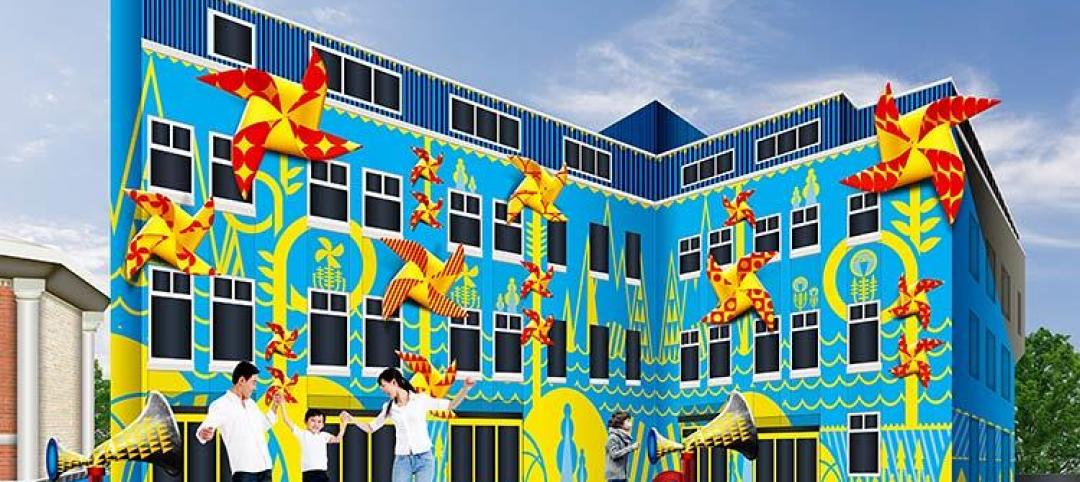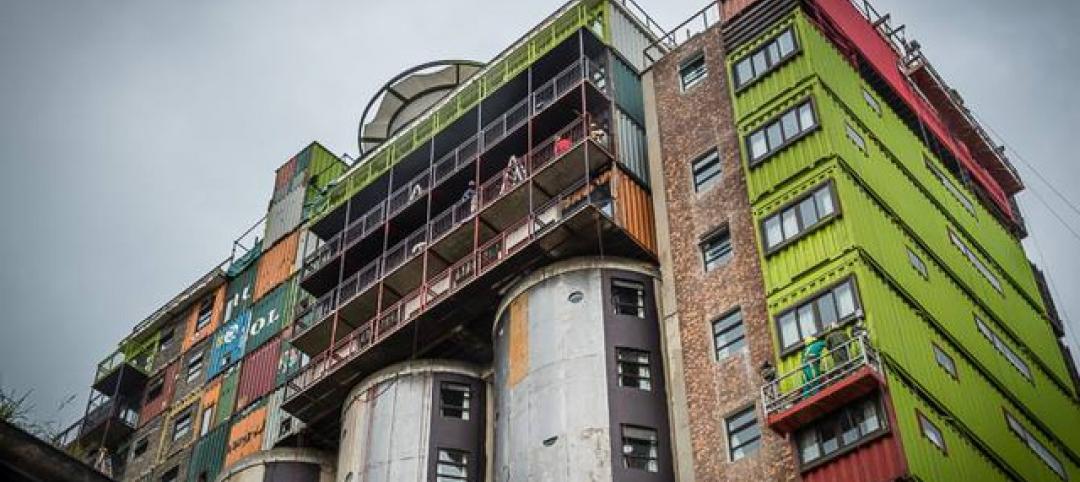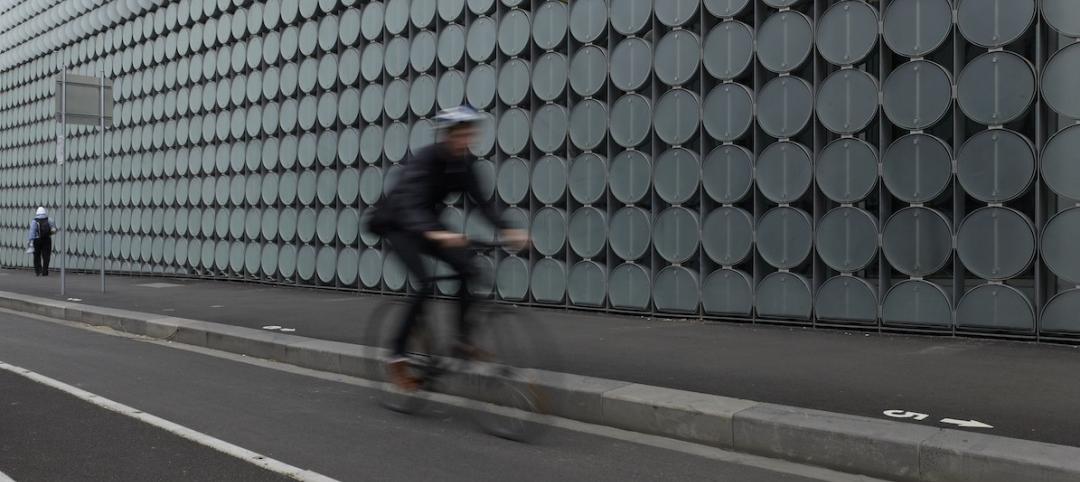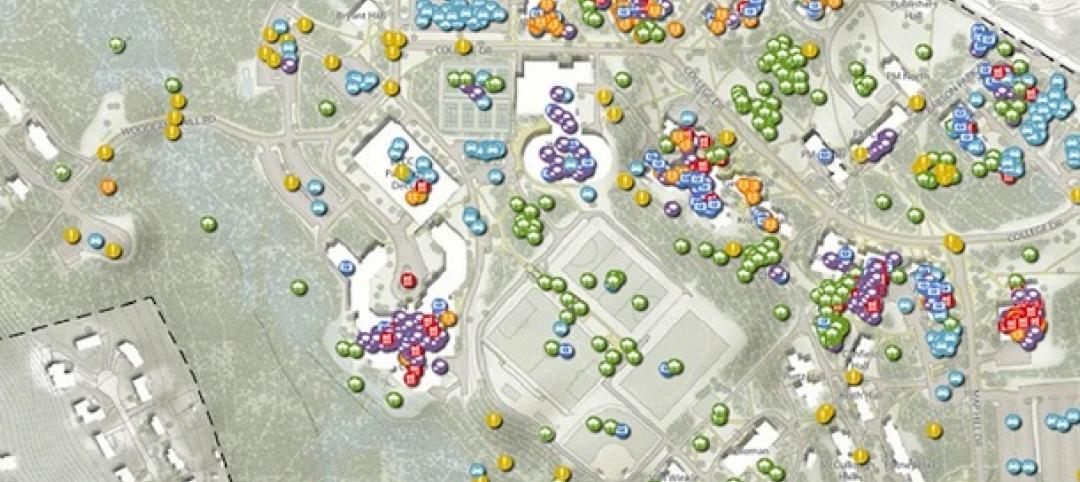The new, $44.5 million Centennial Hall has opened on the campus of the University of Wisconsin (UW)-Eau Claire. National architecture and engineering firm SmithGroupJJR partnered with La Crosse, Wisconsin-based River Architects to design the 182,000-square-foot building.
Centennial Hall houses the College of Education and Human Sciences and consolidates teacher education that was previously split among three buildings dating back to the 1950s. It is the first new academic building on the UW-Eau Claire campus in more than 30 years.
“SmithGroupJJR and River Architects worked extraordinarily well together to create a beautiful and functional structure,” said Dr. Gail Scukanec, dean of the UW-Eau Claire College of Education and Human Sciences, “the new Centennial Hall allows for greater operational efficiencies and greater collaboration."
The four-story building, located between Schneider Hall and Zorn Arena in the central campus mall area, also houses the Departments of Education Studies, Special Education, English, Languages and select student support services. Major spaces are dedicated to distance education, active learning classrooms, teacher education methods labs, general labs and open study areas, along with a total of 165 offices.
Noteworthy are Centennial Hall’s 19 general assignment classrooms – ranging from one 160-seat to five 45-seat rooms – that offer significant new classroom space for use by the entire campus.
Students have a variety of choices for their collaborations. Options include informal “living room” spaces scattered throughout the building, ranging from quiet, four-student nooks to a bustling, multi-story cyber café with views of the Chippewa River, which runs through the campus and inspired the building’s playful, undulating south façade.
Design features nighttime presence, glass artistry honors the Hmong people
With its brick and stone exterior, Centennial Hall was designed to complement the campus’ oldest building: the circa-1916 Schofield Hall, which it faces from across the quad. The new building also blends harmoniously with the new Davies Student Center and venerable Schneider Hall.
Among Centennial Hall’s most dramatic design features are the building’s multi-story, glass corners that offer light-filled, social interaction spaces during the day.
“As night falls, the glass corners act as beacons of light, earning them the nickname of ‘lanterns’,” said Coty Sandberg, LEED AP BD+C, SmithGroupJJR project designer.
The design team maximized the amount of natural light drawn deep into the building to provide a bright indoor environment to its users. In addition to the building’s “lanterns”, designers strategically located windows to allow all public corridors outside views at the end. A rhythm of tall windows and glassy, multi-height spaces are prominent throughout the building.
According to Scukanec, one of Centennial Hall's more beautiful features is the pattern etched into the large glass windows on the building's southwest corner. The design team created the custom frit pattern to honor the Hmong people, an Asian ethnic group whose roots originate in the mountainous regions of China, Vietnam, Laos and Thailand. The Hmong have an important presence in the Eau Claire area.
"This architectural integrated artwork is a leaf pattern, a symbol for life in some cultures, including the Hmong culture," Scukanec said.
Centennial Hall is targeting LEED-NC Silver equivalency. Sustainable design features include optimal building orientation, low-E glazing, energy recovery and occupancy sensors. The building is designed to operate 30 percent more efficiently than current energy codes.
Leading the design of Centennial Hall was the Chicago office of SmithGroupJJR, which provided conceptual design, schematic design, sustainability consulting, design development and construction documents. The general contractor was Miron Construction, Neenah, Wisconsin.
Related Stories
| Feb 17, 2014
GBI to Offer AIA Approved Course Free for 60 Days to Train New Green Globes Professionals
The Green Building Initiative™ (GBI) announced today that between Feb. 13 and April 15 it will provide free access to its online certification course for Green Globes Professionals™ (GGPs). GGPs help guide building projects in achieving Green Globes® ratings, awarded for environmentally-focused design and construction.
| Feb 14, 2014
ASHRAE, Green Grid team up on energy-efficiency guide for data centers
Vendor-neutral publication examines aspects of the popular power usage effectiveness (PUE) metric.
| Feb 14, 2014
Scrap tires used to boost masonry blocks at Missouri University of S&T
Research could lead to blocks that use waste material and have seismic and insulating benefits.
| Feb 14, 2014
Giant interactive pinwheel adds fun to museum exterior
The proposed design for the Santa Cruz Museum of Art and History features a 10-foot pinwheel that can be activated by passersby.
| Feb 14, 2014
First look: Kentucky's Rupp Arena to get re-clad as part of $310M makeover
Rupp Arena will get a 40-foot high glass façade and a new concourse, but will retain many of its iconic design elements.
| Feb 14, 2014
Must see: Developer stacks shipping containers atop grain silos to create student housing tower
Mill Junction will house up to 370 students and is supported by 50-year-old grain silos.
| Feb 14, 2014
The Technology Report 2014: Top tech tools and trends for AEC professionals
In this special five-part report, Building Design+Construction explores how Building Teams throughout the world are utilizing advanced robotics, 3D printers, drones, data-driven design, and breakthroughs in building information modeling to gain efficiencies and create better buildings.
| Feb 14, 2014
Crowdsourced Placemaking: How people will help shape architecture
The rise of mobile devices and social media, coupled with the use of advanced survey tools and interactive mapping apps, has created a powerful conduit through which Building Teams can capture real-time data on the public. For the first time, the masses can have a real say in how the built environment around them is formed—that is, if Building Teams are willing to listen.
| Feb 13, 2014
University officials sound off on net zero energy buildings
As part of its ongoing ZNE buildings research project, Sasaki Associates, in collaboration with Buro Happold, surveyed some 500 campus designers and representatives on the top challenges and opportunities for achieving net-zero energy performance on university and college campuses.
| Feb 13, 2014
3 keys to designing freestanding emergency departments
Having physically disassociated from a central hospital, FEDs must overcome the particular challenges associated with a satellite location, namely a lack of awareness, appeal, and credibility. Gresham, Smith & Partners' Kristin Herman-Druc offers three keys to success.
















